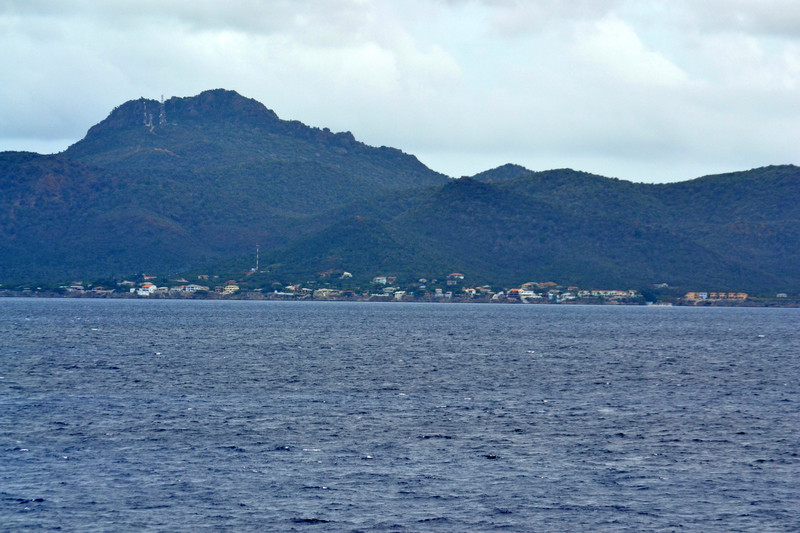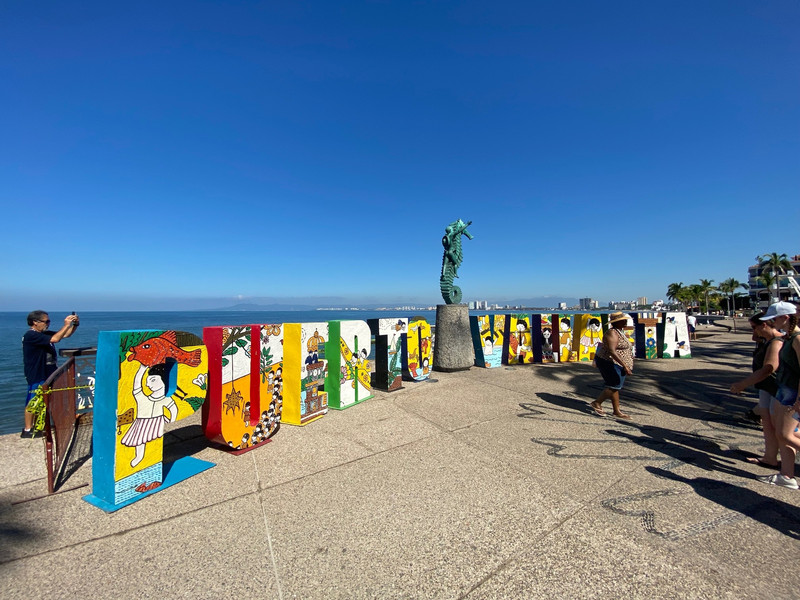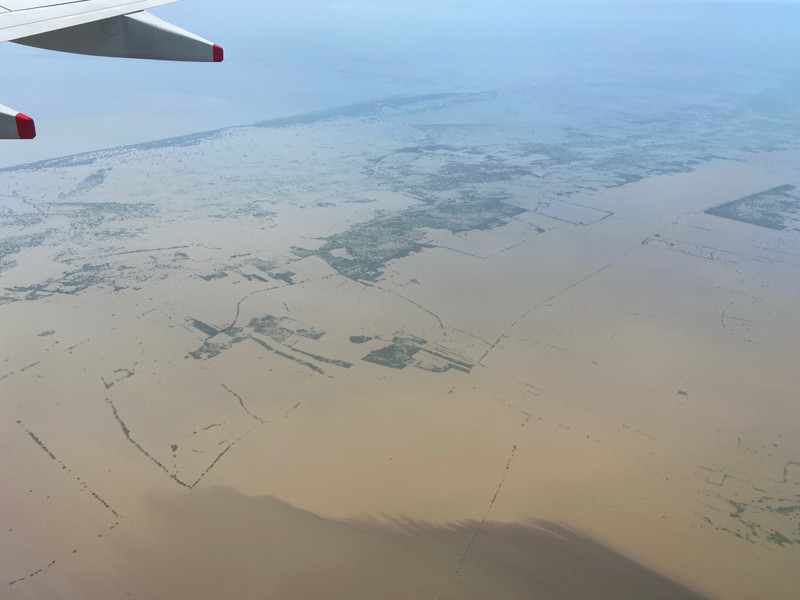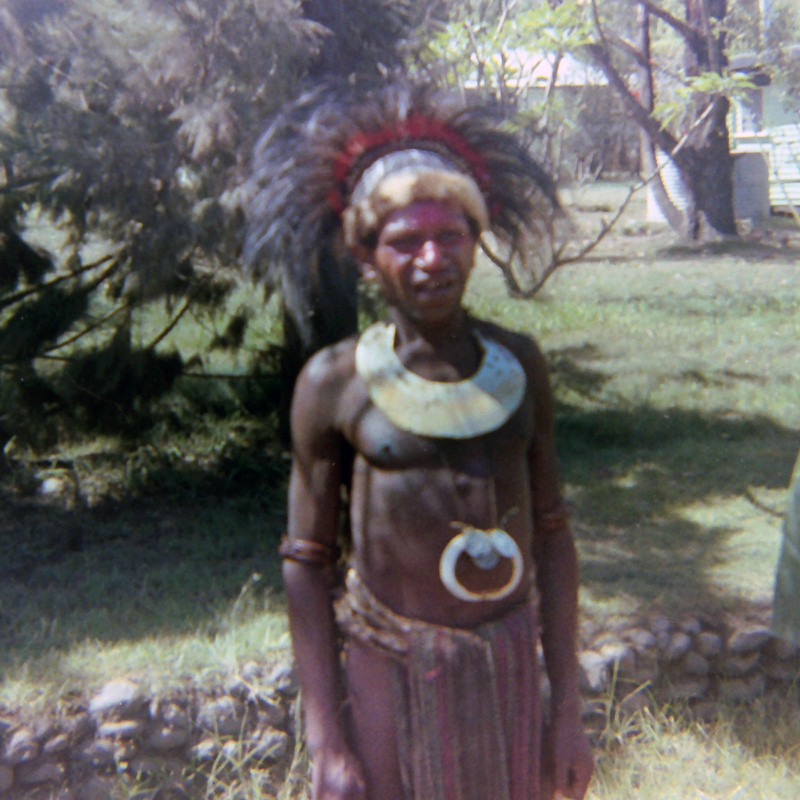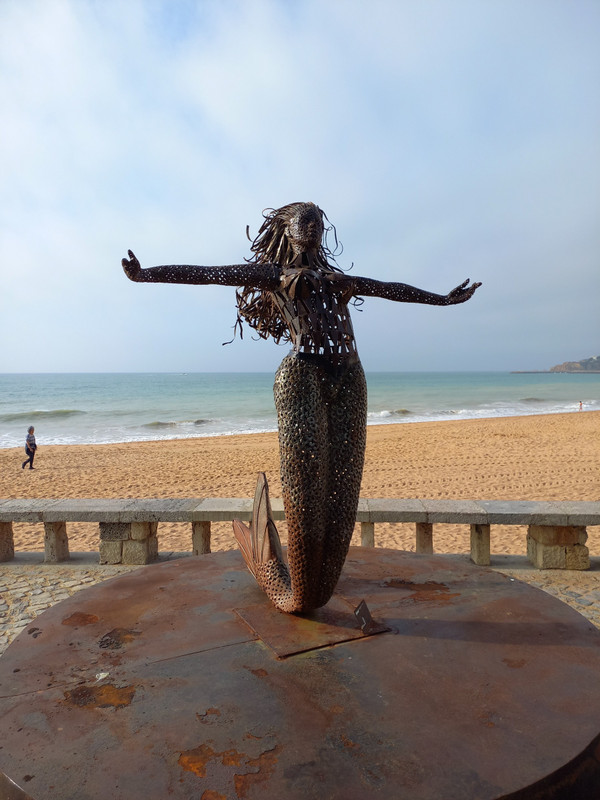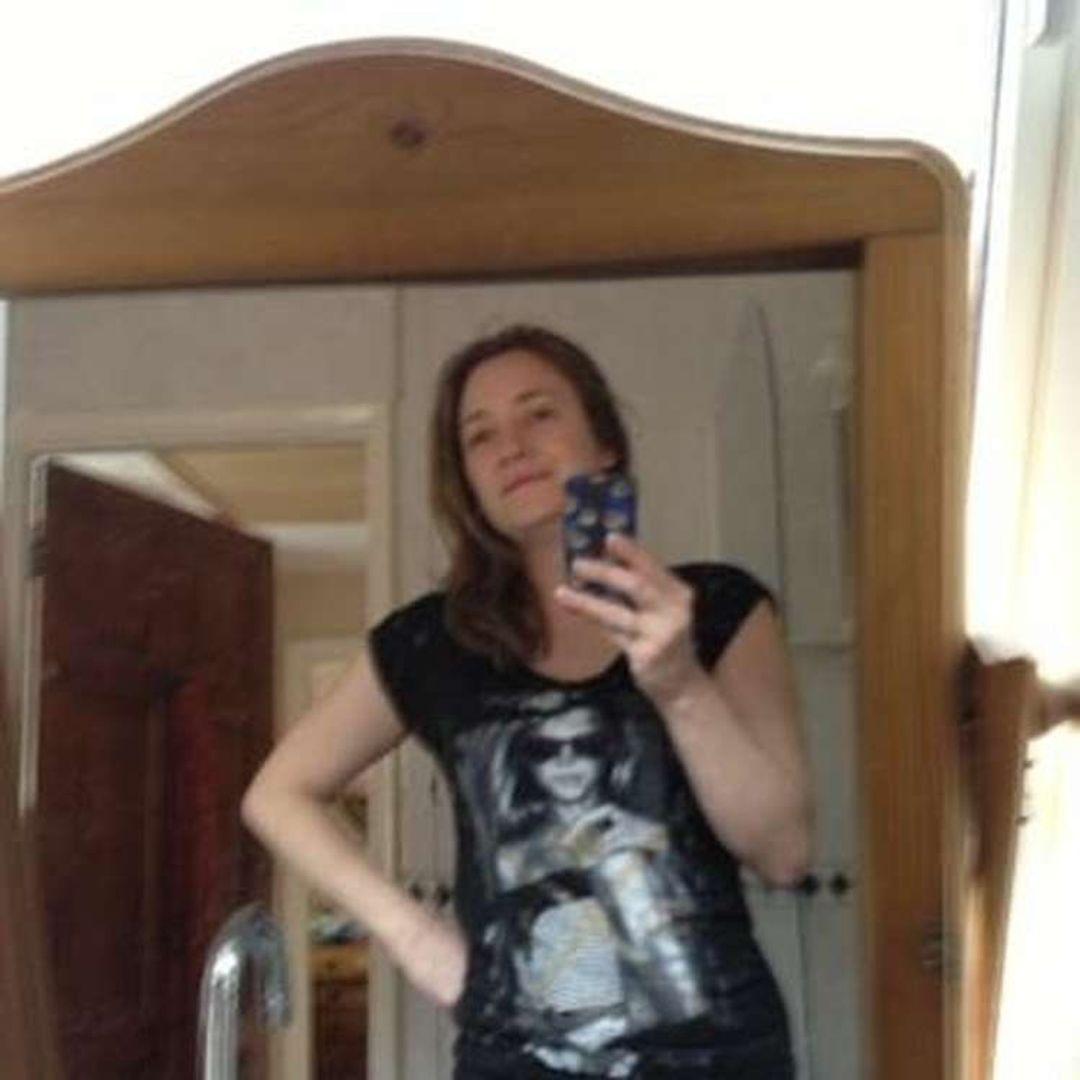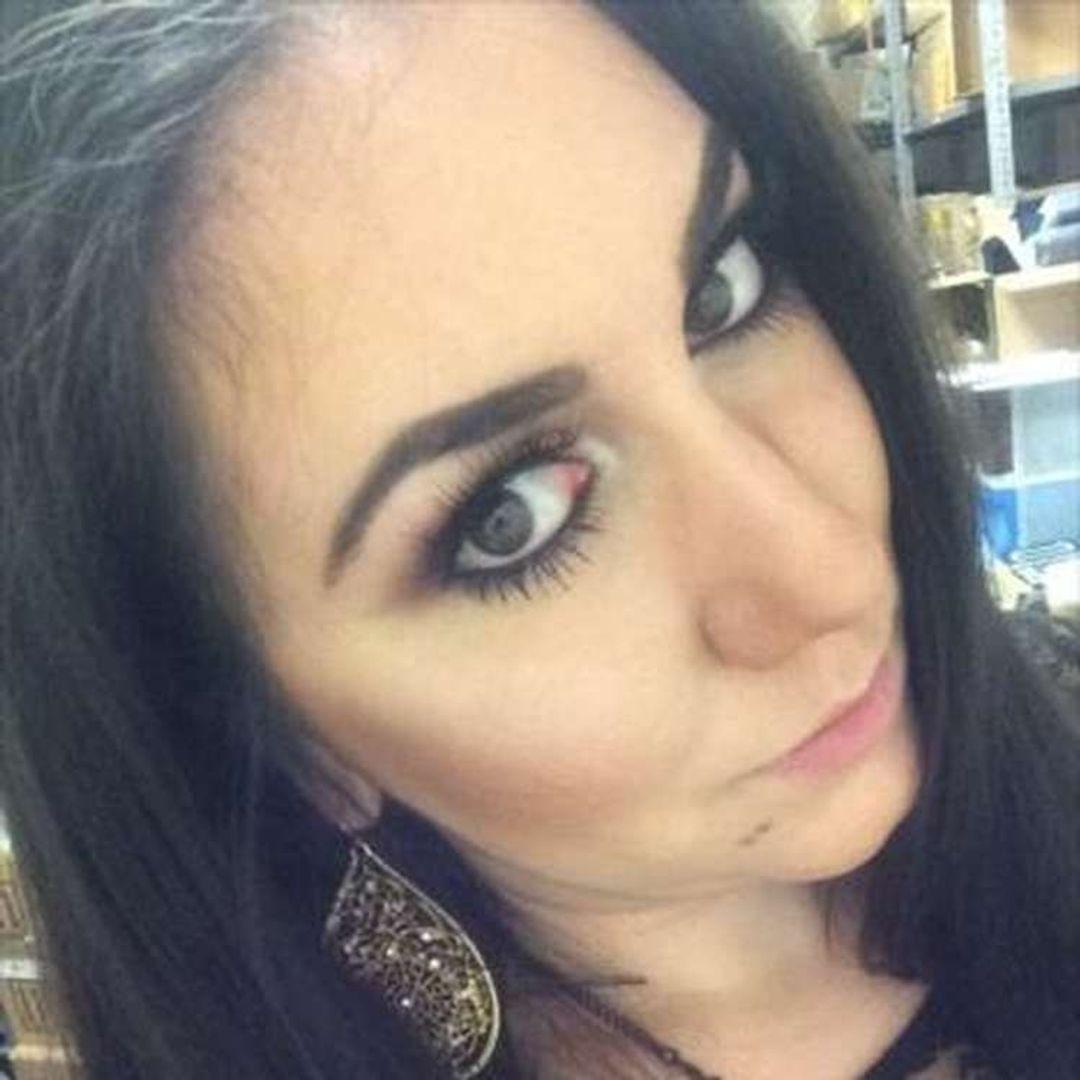Carnival Sunshine arrived off Curaao after 11:00 a.m. on the third day of the cruise. Curaao, along with Aruba and Bonaire (the ABC islands), has been a Dutch possession since the 17th century. Despite their proximity, we found the ABC islands have little interaction with one another. There is no ferry service, for example, between them.
The ship sailed at a leisurely pace along the 30 mile long island, docking at Willemstad at the scheduled time of 1:00 p.m. Rain threatened, but held off. I enjoyed seeing the changing landscape. Christoffelberg in the northern part of the island is the highest point on Curaao at 1,220 feet (372 m). The coastline is dotted with and resort developments leading down to Willemstad. There are also signs of industry. Like Aruba, Curaao has oil refineries. The tourism industry in the ABC islands has been developed since the late 1950s.
The cruise terminal at Willemstad is in the Otrabanda District, across the riverlike Sint Annabaai (St. Anns Bay) from the Punda District. It was an easy walk from the terminal through the Rif Fort to the Queen Emma Bridge. The Rif Fort (Reef Fort), dating from 1828, guarded the Otrobanda
Penha Building. Originally a merchants house (1708). It is still building on the ground floor. Historic Area of Willemstad, Inner City and Harbour, Curaao UNESCO World Heritage site. Inscribed in 1997. DSC_0778
side of the port. The fort has been adapted as the Renaissance Mall shopping area. However, the walls, sally ports and lookouts have been preserved.
The view across Sint Annabaai to Punda is like seeing Amsterdam in pastels. Dutch architecture with its distinctive curved gables is in evidence. But the buildings are painted in bright Caribbean colors. There are two ways across: Ferry and the Queen Emma pontoon bridge. (There is a highway bridge further up the harbor. We took the Queen Emma pedestrian bridge across the bay. Its an experience by itself. The bridge can swung to allow ships to pass through the channel. (But not without plenty of warning!)
The Historic Area of Willemstad, Inner City and Harbour, Curaao is a UNESCO World Heritage site. The Netherlands has been present in Curaao since the construction of Fort Amsterdam in 1634. Punda, the oldest part of the city, grew adjacent to the fort and retains its Dutch colonial appearance. Susan and I decided to first look at the Fort Amsterdam area. Construction of Fort Amsterdam began just after Dutch occupation of the island. A modern hotel dominates the main part of the old fort. However, historic
De drie gebroeders = The Three Brothers. Trio of peaks at Piscadera, Curaao. Zwarte Berg, Jacque Everts Berg, Veeris Berg. DSC_0677p1
parts of the fort do remain and are in use as government offices. The Governors Palace is the seat of Curaaos government. One can walk through the entry arch into the courtyard. (The courtyard is used as a car park.) At the far end of the courtyard is the 17th century Fort Church, an active Protestant church. It has a museum and is open for tours in the morning hours. Unfortunately, we were here in the afternoon and it was closed.
Continuing up Handelskade (the street running along the waterfront from the fort) we stopped in several shops in the old buildings. Around the corner was the floating market. Floating because produce is brought in by sea from nearby South America. I needed to pick up some items at a pharmacy, called a botica in Curaao. The botica staff showed they were fluent in English, Dutch and Papiamento, the local language. (Papiamento is a blend of Portuguese with African languages, Spanish and Dutch.)
Nearby we found Synagogue Mikv the oldest continuously active synagogue in the Western Hemisphere. The synagogue has a museum and we saw both the museum and the synagogue itself. Constructed in 1732, the synagogue
Berg Ararat = Ararat Hill overlooking Willemstad, Curaao. . The smokestacks show the industry present on the island.
